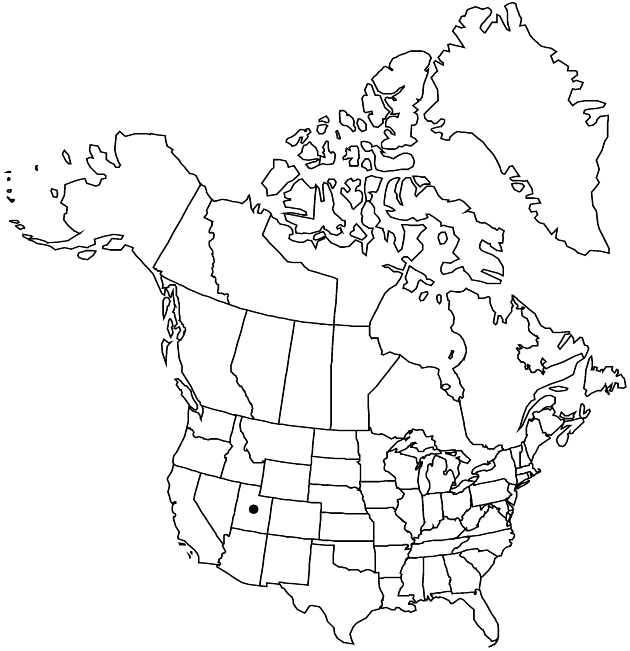Isocoma humilis
Phytologia 70: 92. 1991.
Herbage villosulous or tomentose to sparsely hispidulous (hairs short, crisped, white), not resinous. Leaf-blades narrowly oblanceolate, 5–10 (–18) mm, margins usually toothed or lobed (teeth or shallow lobes in 1–2 (–3), pinnately arranged pairs), sometimes entire. Involucres 5–6 × 6–7 mm. Phyllary apices greenish, not aristate, gland-dotted, without resin pockets. Florets 19–28; corollas 4–5 mm. Cypsela ribs not forming apical horns.
Phenology: Flowering Sep–Oct.
Habitat: Sandy soils from red sandstone, pinyon-juniper-shrub
Elevation: 1000–1200 m
Discussion
Of conservation concern.
Isocoma humilis is known only from Washington County. It is recognized by its low stature (mostly 4–8 cm) and rounded habit, villosulous vestiture, small, toothed leaves, relatively large, many-flowered heads borne singly or in pairs, and small corollas and cypselae.
Selected References
None.
Lower Taxa
"thick" is not a number.
